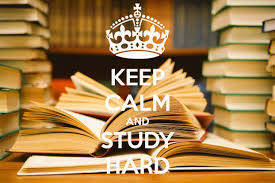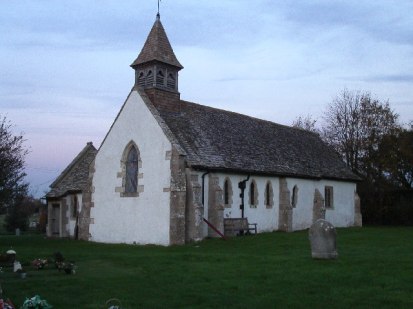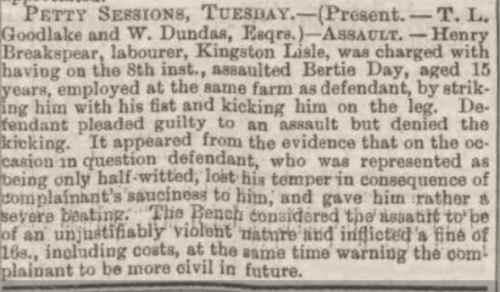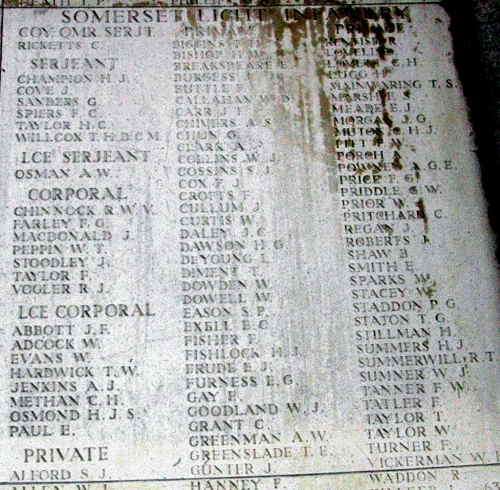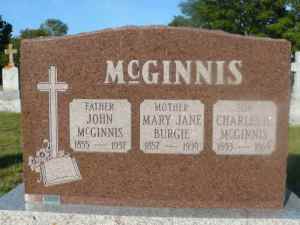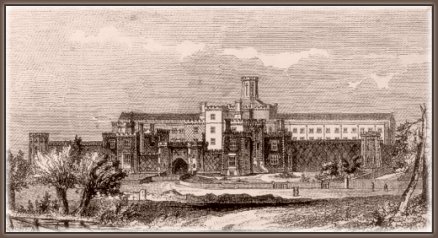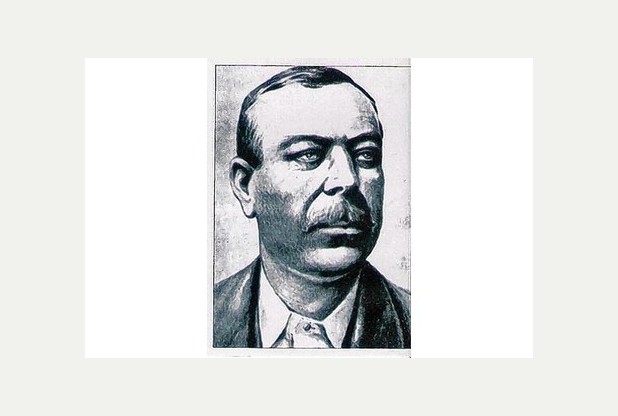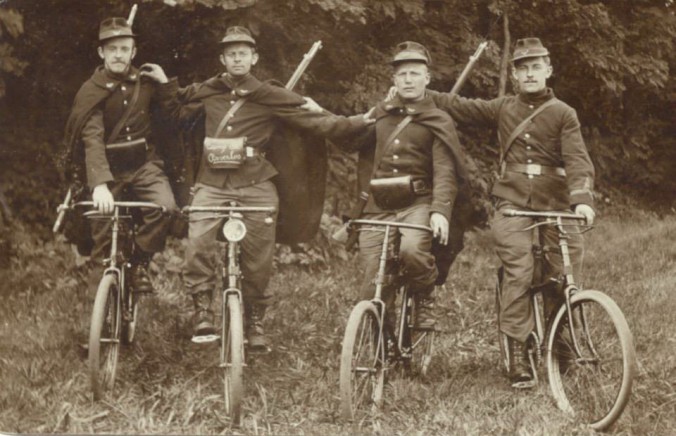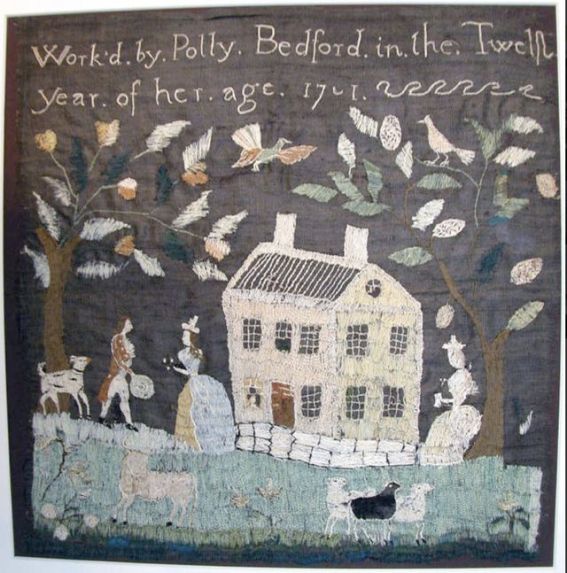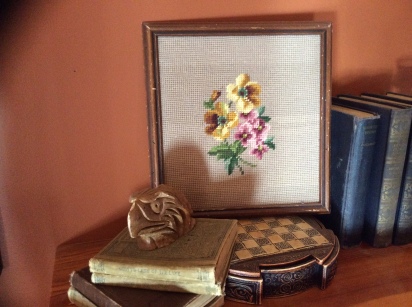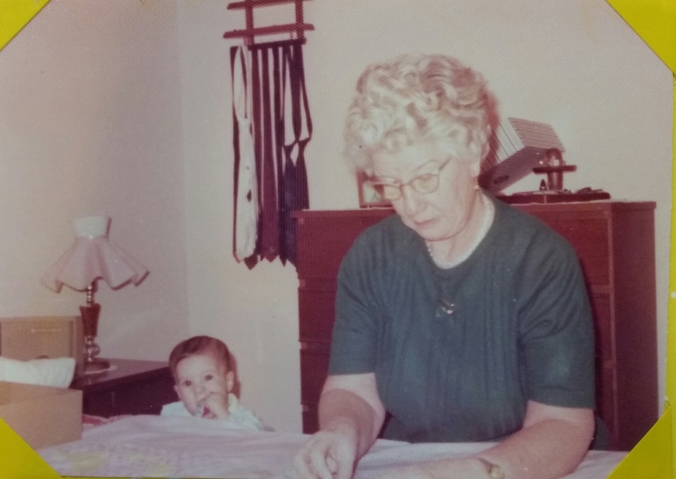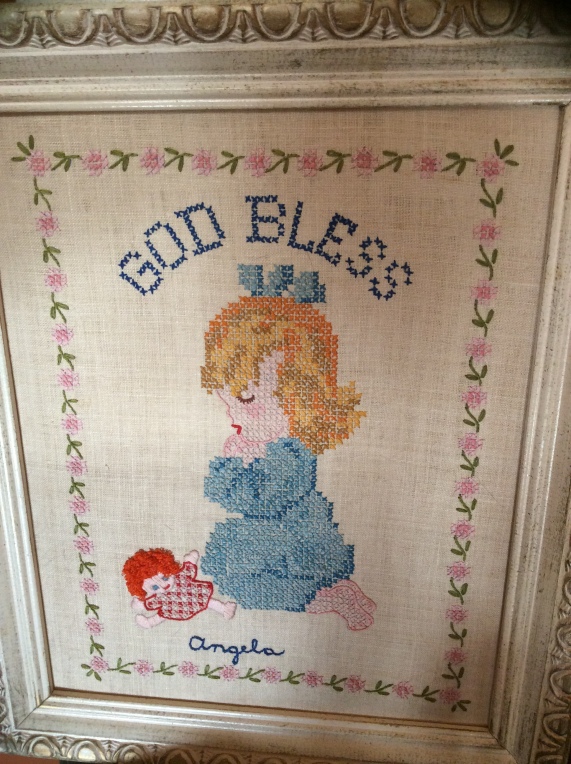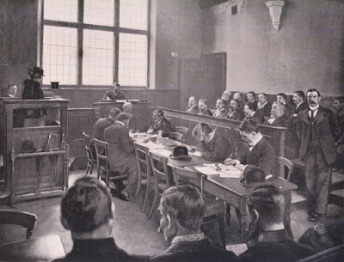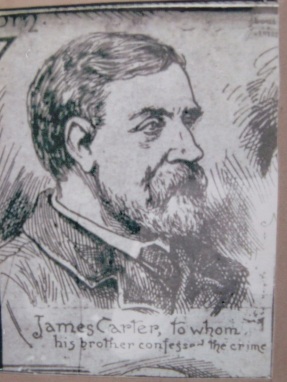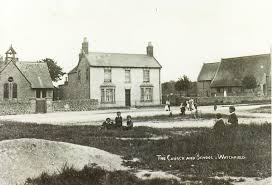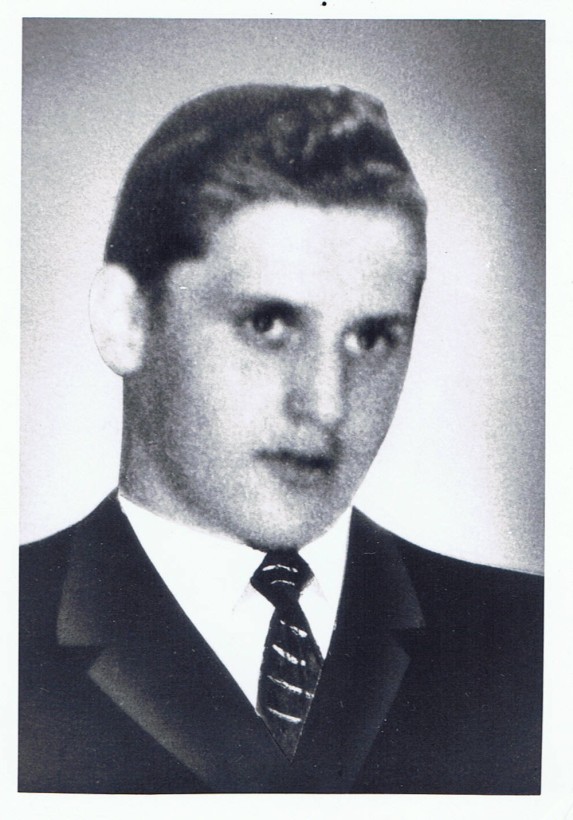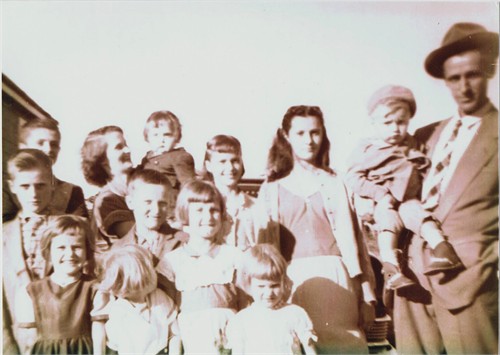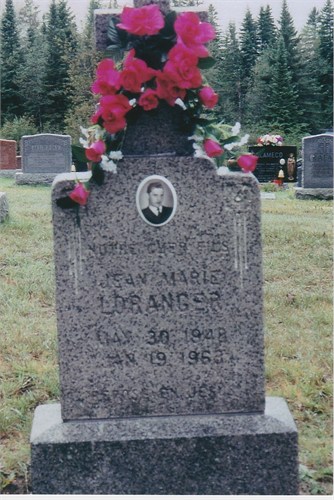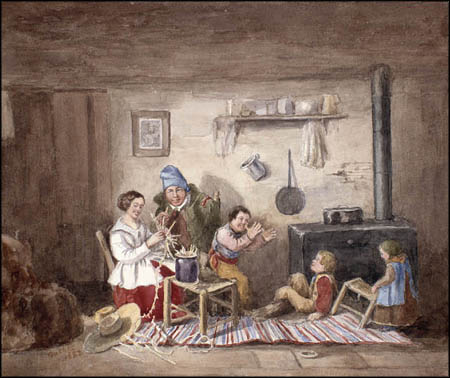
If you, as I, have sprung from the earliest of French-Canadian roots you may be overwhelmed by the vast expanse of records. While it is always heartening to see that research sources abound it can also be daunting wading through the piles of paper, the websites, the book stacks, to piece together the stories of our ancestors and decipher the validity of sources.
French-Canadian genealogical research can be hampered also by one’s lack of French language knowledge and the fear of accessing records and documents one cannot comprehend. I would like to encourage researchers to move beyond this fear and discover a world of exciting documents brimming with rich genealogical details.
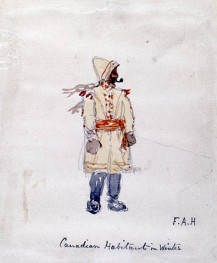 In genealogy, as in many disciplines, it is important to be systematic, bearing this in mind I have decided to produce a series of blog posts introducing novice genealogists to specific French-Canadian document-sets, databases, and resources available online. The hobbiest must understand that genealogical research should venture beyond sites such as Ancestry and Family Search. Seasoned researchers, especially those who began their research prior to the onslaught of the internet, focus much of their research deep within the stacks of the archives. Visiting an archive in person is always preferable but today we are lucky to find more and more archives are updating their websites with digital databases, many including images of original documents.
In genealogy, as in many disciplines, it is important to be systematic, bearing this in mind I have decided to produce a series of blog posts introducing novice genealogists to specific French-Canadian document-sets, databases, and resources available online. The hobbiest must understand that genealogical research should venture beyond sites such as Ancestry and Family Search. Seasoned researchers, especially those who began their research prior to the onslaught of the internet, focus much of their research deep within the stacks of the archives. Visiting an archive in person is always preferable but today we are lucky to find more and more archives are updating their websites with digital databases, many including images of original documents.
I am planning a series of blog posts regarding specific French-Canadian records and collections available online for those who are newly venturing into French-Canadian research. Today I will focus on the early Quebec census records which should represent a wonderful starting point for those struggling with the other language-rich French-Canadian sources we will later explore.
The Library and Archives of Canada website is just one place you can access some wonderful online digital databases. A particular favourite of mine is that of the 1666 Quebec Census which is not indexed but is a collection of browse-able images. While they may be rather difficult at times to decipher there are some decent online transcriptions which can be used to help you as you work through the originals. One of these transcriptions can be found on Hugh Armstrong’s Genealogy Site. The transcriptions are divided by region so you must be sure to match up the correct region to the correct portion of the original census.
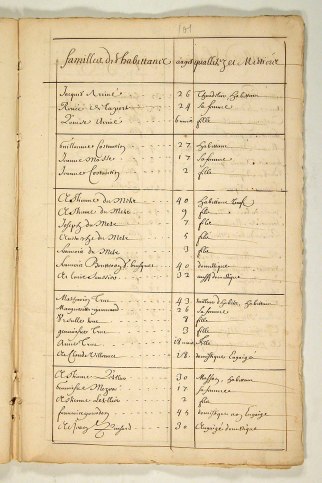
Sample page from the 1666 Quebec Census
You will also find the 1667 and 1681 Quebec Census record images. All these early census records include the names of all household members and ages. The 1666 census also includes occupations or descriptors. These records as you should expect are in French however the nature of the census as a listing of names and ages makes them easily comprehensible to even those with little experience of the French language. They are a fabulous starting point for those breaking into the realm of French-Canadian research.
Some helpful vocabulary you may encounter in the 1666 Census:
travaillant ~ labourer Cordonnier ~ shoemaker macon ~ builder charpentier ~ carpenter menuisier ~ carpenter fils ~ son Sa femme ~ wife habittant ~ settler boulanger ~ baker chapellier ~ bricklayer fille ~ daughter briquetier ~ bricklayer Domestique Engaigé ~ Domestic notaire ~ notary
These are just a few words you may encounter. Use Google translate or go “old school” as I often do and invest in a French-English dictionary.
I look forward to delving further into the topic of French-Canadian online resources, including collections from Bibliotheque et Archives Nationales du Quebec (BANQ), in future blog posts!

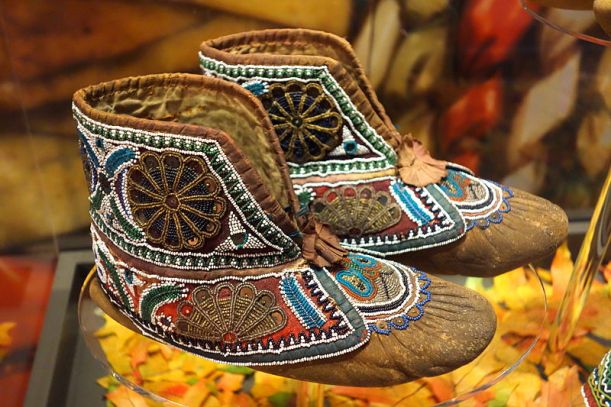
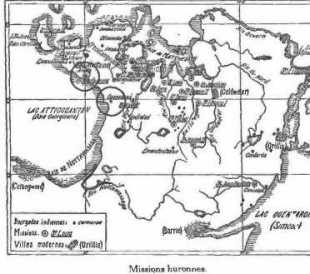 My 8th Great Grandmother was Huron or Wendat (Wyandot). The Wendat people no longer exist as a nation. They were drastically reduced as a result of European introduced disease, and Iroquoian attacks. Those who survived were often assimilated into the other Iroquoian nations. I encountered my 8th Great Grandmother through the Roman Catholic Church parish records (Drouin collection). She had married my French Canadian 8th Great Grandfather and was described as a “Huron”. Her parents were named as was her birth place in a Huron mission in the “land of the Huron” now part of Ontario. While these parish records would seemingly represent the end of the research road they were not.
My 8th Great Grandmother was Huron or Wendat (Wyandot). The Wendat people no longer exist as a nation. They were drastically reduced as a result of European introduced disease, and Iroquoian attacks. Those who survived were often assimilated into the other Iroquoian nations. I encountered my 8th Great Grandmother through the Roman Catholic Church parish records (Drouin collection). She had married my French Canadian 8th Great Grandfather and was described as a “Huron”. Her parents were named as was her birth place in a Huron mission in the “land of the Huron” now part of Ontario. While these parish records would seemingly represent the end of the research road they were not.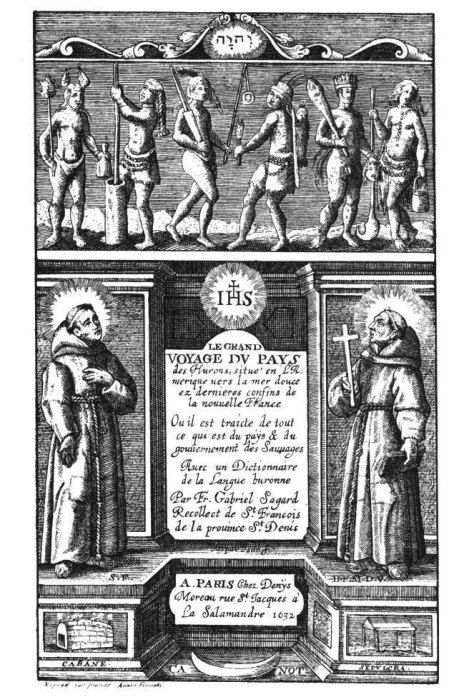 Can one turn to Indigenous oral history interviews to discover the social histories of our ancestors? It is possible, though the value of these oral histories may fade the further you venture into the past. If ones researching First Nations ancestors in more recent generations the options are more varied and available.
Can one turn to Indigenous oral history interviews to discover the social histories of our ancestors? It is possible, though the value of these oral histories may fade the further you venture into the past. If ones researching First Nations ancestors in more recent generations the options are more varied and available.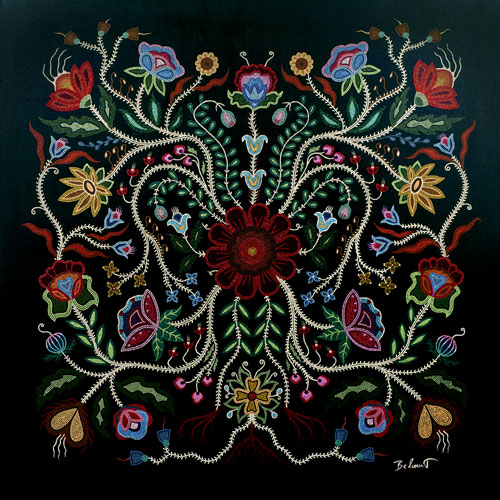 We must remember that First Nations is meant to indicate a multitude of indigenous nations. As a first step attempt to determine which nation to which your ancestor belongs. It is this knowledge which will provide a starting point when determining available sources. What region of Canada might your ancestor have lived in? In what treaty area? Consider the time frame. Then begin! Research the particular First Nation through history books and ethnographies to determine what was happening during the period of interest and perhaps what documentation might be relevant.
We must remember that First Nations is meant to indicate a multitude of indigenous nations. As a first step attempt to determine which nation to which your ancestor belongs. It is this knowledge which will provide a starting point when determining available sources. What region of Canada might your ancestor have lived in? In what treaty area? Consider the time frame. Then begin! Research the particular First Nation through history books and ethnographies to determine what was happening during the period of interest and perhaps what documentation might be relevant.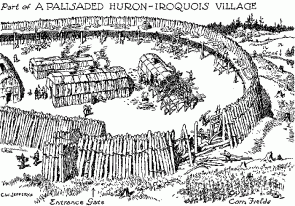 Look to archaeology reports to gain a greater understanding of the life of your ancestors pre-contact. Archaeological societies exist for most provinces and publish regular journals. Here are two examples of archaeological reports from a Huron site I once worked on:
Look to archaeology reports to gain a greater understanding of the life of your ancestors pre-contact. Archaeological societies exist for most provinces and publish regular journals. Here are two examples of archaeological reports from a Huron site I once worked on:
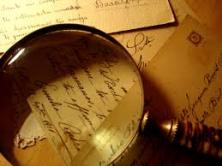 genealogist. I had the aptitude and I was able to search out the resources to help me develop my abilities. Webinars, my own trial and error, reading blogs, articles and books have all been my learning tools but in January I decided I wanted to pursue my passion more seriously. I want to be taken seriously as a genealogist, I want to build credentials, and I want to be able to legitimately provide services and assistance to others in search of their family’s past.
genealogist. I had the aptitude and I was able to search out the resources to help me develop my abilities. Webinars, my own trial and error, reading blogs, articles and books have all been my learning tools but in January I decided I wanted to pursue my passion more seriously. I want to be taken seriously as a genealogist, I want to build credentials, and I want to be able to legitimately provide services and assistance to others in search of their family’s past.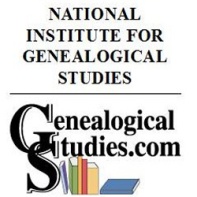 The Certificate in Genealogical Studies — Canadian Records is a 40 course program resulting in a certificate and post-nominals (PLCGS). I have completed 7 of the 9 Basic Level courses and will be taking the final 2 basic courses this coming month. Completely online, each course includes module readings, assignments, an exam, and optional live stream chats. The program includes required Basic, Intermediate, and Advanced level courses as well as elective courses which can be selected from a wide menu of choices. Most courses are about two months long however you can work ahead if you wish. You are allotted approximately 2 years for several of the culminating analysis courses which appear to be more intensive. I enjoy working at my own pace!
The Certificate in Genealogical Studies — Canadian Records is a 40 course program resulting in a certificate and post-nominals (PLCGS). I have completed 7 of the 9 Basic Level courses and will be taking the final 2 basic courses this coming month. Completely online, each course includes module readings, assignments, an exam, and optional live stream chats. The program includes required Basic, Intermediate, and Advanced level courses as well as elective courses which can be selected from a wide menu of choices. Most courses are about two months long however you can work ahead if you wish. You are allotted approximately 2 years for several of the culminating analysis courses which appear to be more intensive. I enjoy working at my own pace!